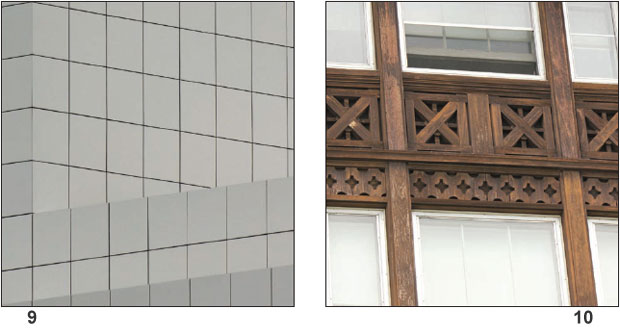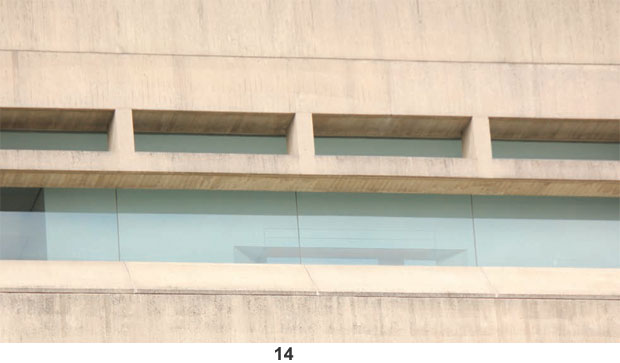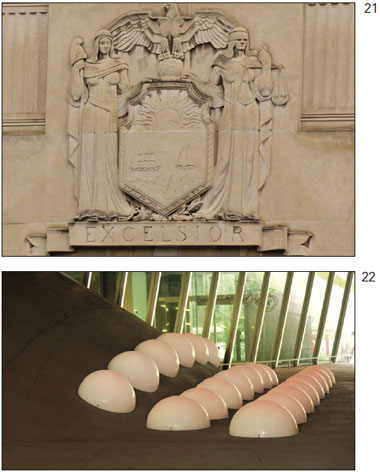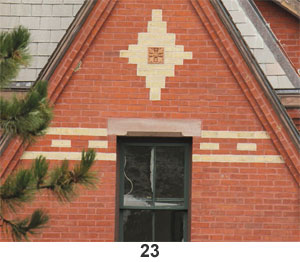Photographs by Lisa Banlaki Frank
Observations by Kermit Parsons
In celebration of Cornell’s Sesquicentennial, CAM offers a chance to test your memory of University buildings. The following pages feature up-close images of architectural elements throughout Central Campus, accompanied by quotations from the seminal book of Cornell architecture: The Cornell Campus: A History of Its Planning and Development (1968) by the late Kermit Parsons, MRP ’53, then chairman of the Department of City and Regional Planning.
“In a university as large and as diverse as Cornell,” Parsons wrote, “one hopes there will always be room on the campus for the best of the older, memory-evoking buildings, for green open spaces, long views, trees, walks, benches, and gates as well as for up-to-date, forward-looking buildings, for paved spaces, closed courts and quadrangles, sculpture, parking lots, and bus shelters; and one expects and hopes that there will continue to be variety within unity, clean unadorned laboratories as well as elegant museums, machinery as well as sculpture, and a sense of formality as well as natural beauty.”
How many details do you recognize? For the answers see page 2.

 ‘Ezra Cornell was not insensitive to beauty. He simply knew what he wanted. If the things he wanted in buildings were not always beautiful, it was probably because the service of some social or practical end indicated a need for economy.’
‘Ezra Cornell was not insensitive to beauty. He simply knew what he wanted. If the things he wanted in buildings were not always beautiful, it was probably because the service of some social or practical end indicated a need for economy.’


‘Andrew D. White’s earliest interest in architecture was intellectual and emotional . . . He was probably what psychologists might now call a visualizer; that is, one who thinks of situations and places as mental pictures, one who “sees” imaginary landscapes and structures. ‘


‘If the architecural lines of the two buildings are not in the same plane we cannot tell what sort of trouble will be produced. But I am certain we will deeply regret it.’
 ‘Those who came to Cornell in its first fifteen years never failed to recall the beauty of the place—and its primitive conditions.’
‘Those who came to Cornell in its first fifteen years never failed to recall the beauty of the place—and its primitive conditions.’



 ‘The three factors which contributed most toward making life difficult for early Cornellians were rapid growth, scattered facilities, and difficult terrain. The University was unexpectedly successful in attracting large numbers of students.’
‘The three factors which contributed most toward making life difficult for early Cornellians were rapid growth, scattered facilities, and difficult terrain. The University was unexpectedly successful in attracting large numbers of students.’
 ‘In short, one hopes that the Cornell of Andrew Dickson White and Ezra Cornell will continue to express beauty as well as utility in the evolution of its campus on East Hill.’
‘In short, one hopes that the Cornell of Andrew Dickson White and Ezra Cornell will continue to express beauty as well as utility in the evolution of its campus on East Hill.’


